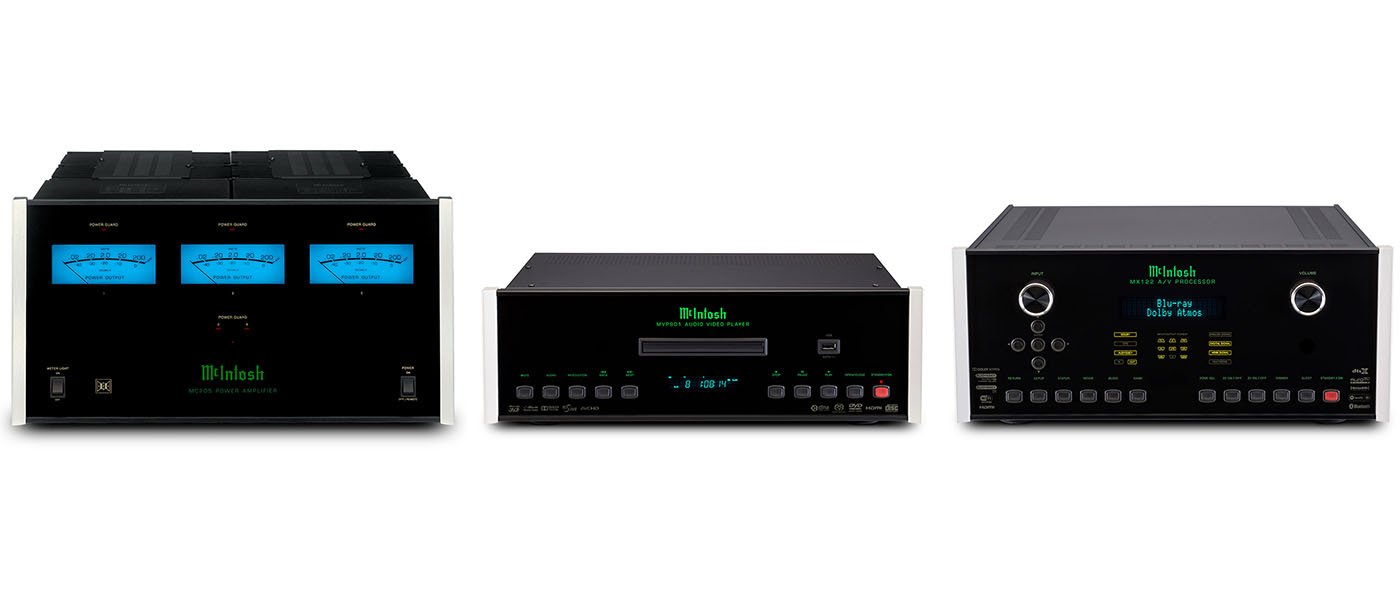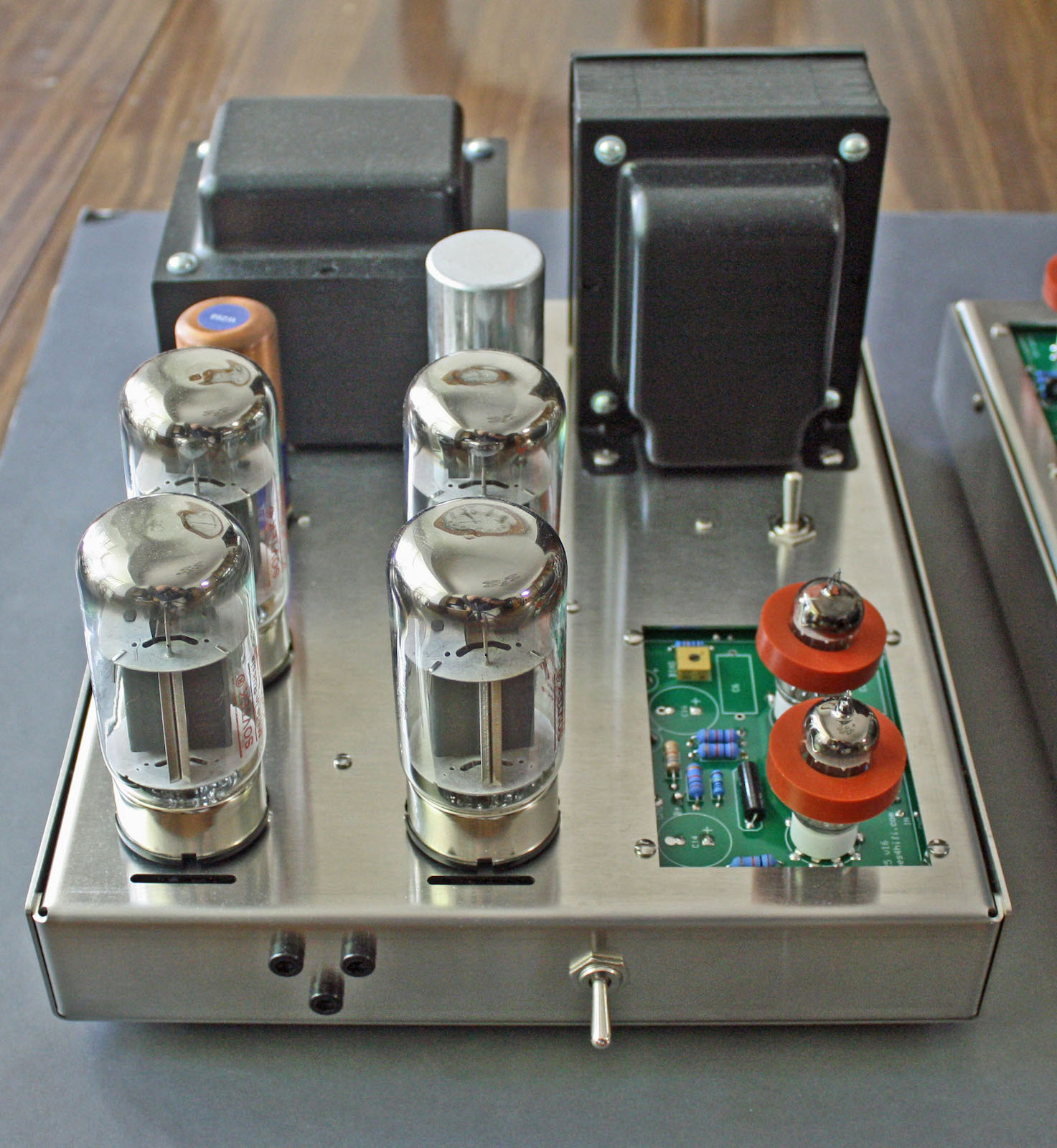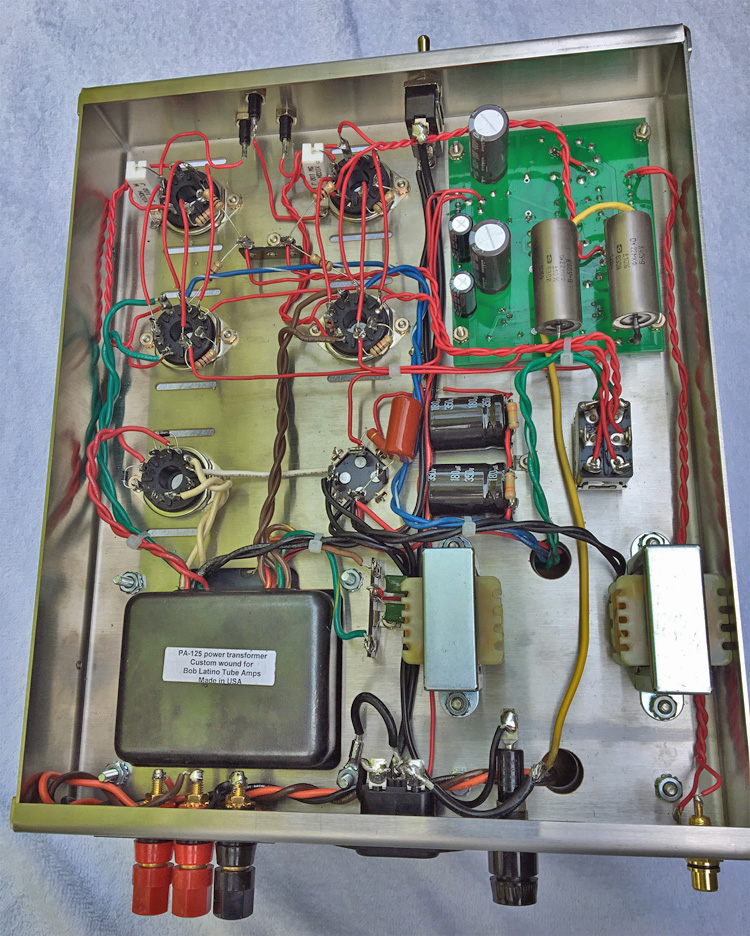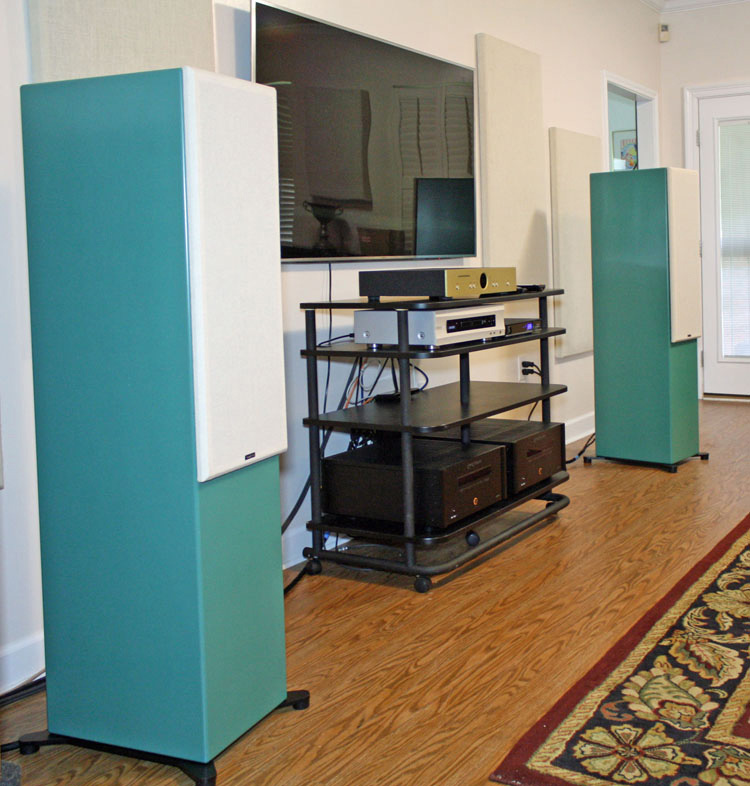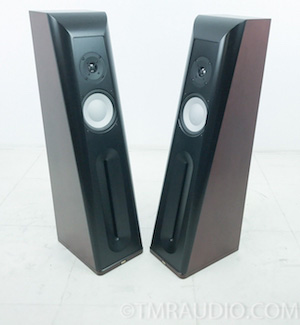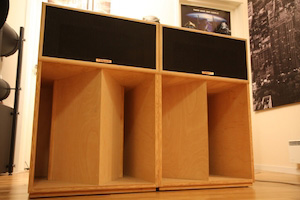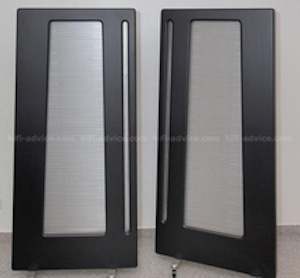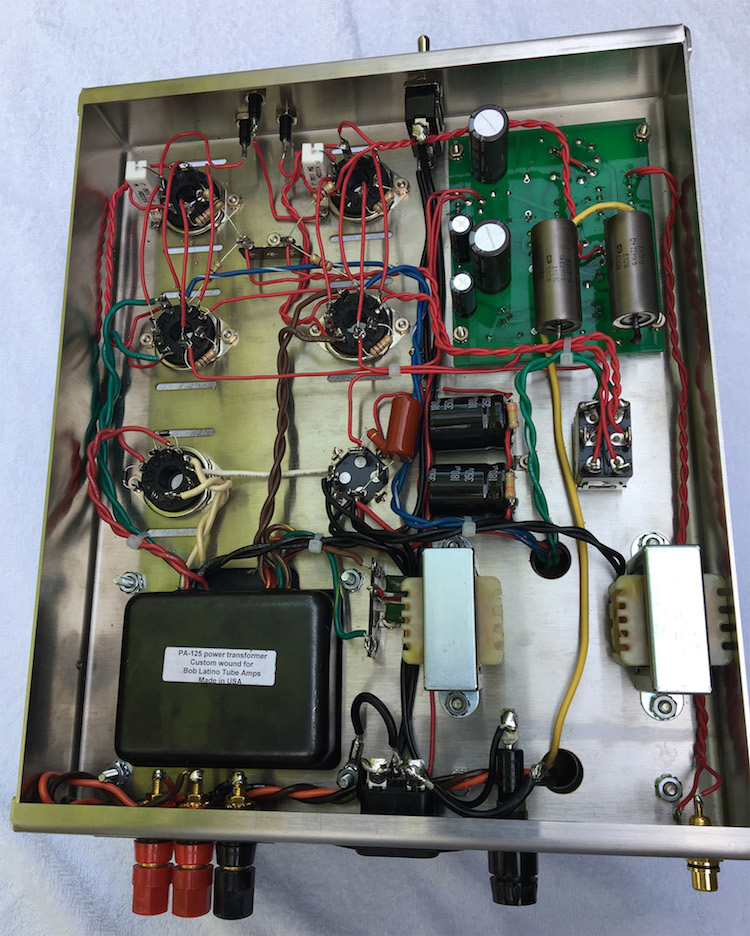These options make the amplifiers virtual audio chameleons that you can tweak to fit your system.
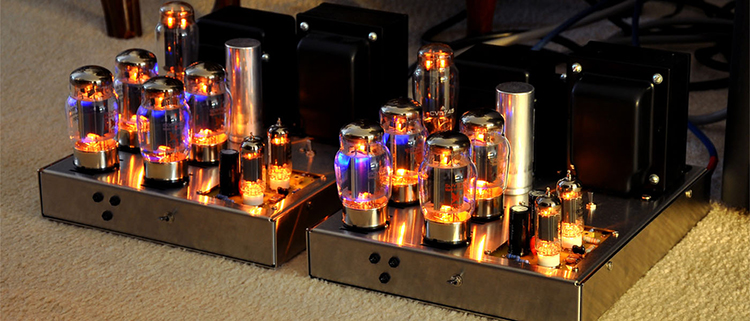
Vacuum Tube Audio M-125 Mono-Tube Power Amplifier
- VTA M-125 mono-tube power amplifiers offer enough power to run almost any speaker
- Transformer coupling makes them ideal for low-impedance loads
- Significant flexibility with pentode-triode switches and dual output taps
- No labeling of any type – you’ll need the manual
- Available in kit form for those who want an even greater value
- “Heavy Iron” audio – no shortage of guts here!
- Tube rolling is easy and effective for different voicing
- Outputs can be run with either two or four tubes per channel
- Exceptionally high-quality parts
The VTA M-125 mono-tube power amplifiers are the flagship products of the Vacuum Tube Audio (VTA) Company. The VTA M-125 amplifiers are available both as kits and as fully-wired, ready-to-play products. The majority sold are sold in kit form. The review units, however, came pre-wired and tested with a full complement of vacuum tubes. I’ve previously reviewed the VTA ST-120 stereo amplifier, and also far more expensive vacuum tube amplifiers from companies such as Audio Research. The VTA M-125 mono-tube power amps hold their own, sonically, with the best of the best.
Power Output:
(4xKT88 / pentode mode) – 125 watts @ <1% THD from 17Hz to 32kHz
(2xKT88 / pentode mode) – 65 watts @ <1% THD from 17Hz to 32kHz
(4xKT88 / triode mode) – 65 watts @ <1% THD from 17Hz to 32kHz
(2xKT88 / triode mode) – 35 watts @ <1% THD from 17Hz to 32kHz
Intermodulation Distortion:
<0.38% @19Hz to 20kHz at rated power
Frequency Response:
10Hz to 35kHz +/- 0.1dB @ 1 watt
Power Bandwidth:
17Hz to 37kHz +/- 0.3dB @ 125 watts
Sensitivity:
1.2 volts in for 125 watts out
Feedback:
13dB
Damping Factor:
14
Input Impedance:
270K ohms
Hum & Noise:
>95dB below 125-watt output
Phase:
Non-inverting
Output Taps:
4 or 8-ohm speaker matching
Chassis:
16 gauge brushed stainless steel
Power & Output Transformers:
Made in USA
Rectifier:
GZ34/5AR4 tubes OR (optional) Weber WZ68 solid-state rectifier
Driver Tubes:
12AU7 / 12BH7 / 5963 / 5814 / 6189 (two of your choice per amplifier)
Output Tubes:
2x or 4x KT88 / 6550 / KT90 / KT100 / KT120 (two or four of your choice per amplifier)
Dimensions:
10” wide x 12” deep x 7.1” high
Weight:
33 pounds
Shipping Weight:
~38 pounds
Pricing:
Two kits with no tubes – $1778 plus shipping
Two wired amps with no tubes – $2495 plus shipping
Two wired amps with tubes – $2795 plus shipping
Warranty:
Wired amps – 1 year parts & labor
Kit amps – 1 year parts
Tubes – 90 days
Company:
SECRETS Tags:
Monoblock, Tube, Power Amplifier, High Power, Kit, Made in USA, Bargain, Vacuum Tube Audio, VTA, M-125, Power Amplifier Reviews 2017
- Audio Van Alstine DVA-850 mono block hybrid power amplifier
- Audio Research VT-80 tube integrated amplifier
- Vacuum Tube Audio ST-120 stereo tube amplifier
That said, there’s no free lunch. What do you give up in order to have such economical sonic goodness? The Audio Research products, despite using vacuum tubes to generate output watts, are most definitely twenty-first century products. They sport enhancements such as automatic tube matching, a timer to keep track of tube life, protection against cascade failures should a tube blow, and other features that ensure reliability and consistent performance. The VTA products lack these advanced features, nor do they have thick aluminum face-plates or balanced XLR inputs.
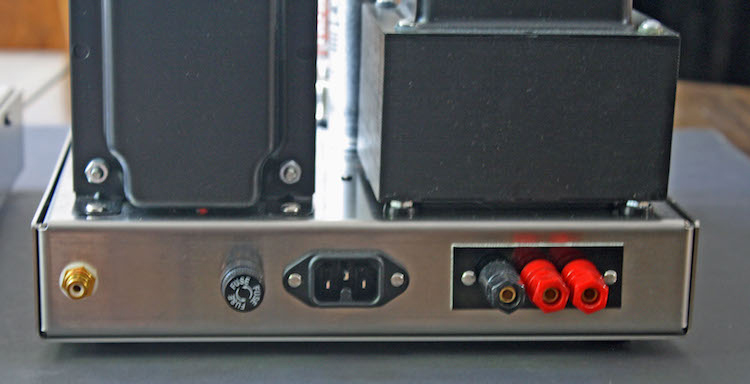
In fact, the VTA M-125 mono-tube power amplifiers lack even the simplest of customer conveniences – There are no labels on anything, and the manual can be daunting. You’ll need additional items too, specifically a volt-ohm meter, and the ability to use it just to get the amplifier biased and running. It isn’t hyperbole when I say that there can be challenges, particularly if you’re not technically adept.
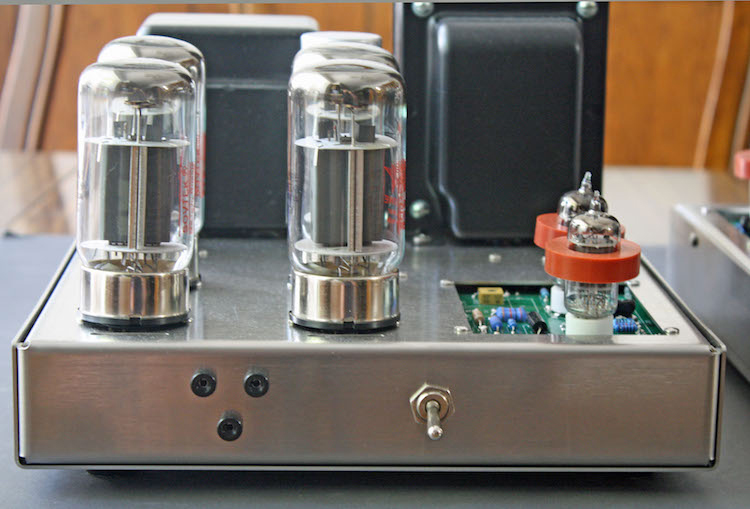
The VTA M-125 mono-tube power amplifiers demand a bit of involvement from the user. Unlike most consumer audio products that are designed to be “idiot-proof,” the sheer flexibility of these amplifiers complicates the new-user experience.
Obviously, if you’ve opted to purchase the kit version of the VTA M-125s, then you are tech-savvy enough to understand the technology. But if you’re just a consumer looking for high end sound at a bargain price, then the user’s manual is compulsory.
But if you’re willing and able to invest the time required to read (and understand) the instructions, then you’ll get one of the best values in audio.
Some serious thought and effort has gone into the design of the VTA M-125 mono-tube power amplifiers, with the goals of high fidelity and high reliability. The chassis is well-constructed of non-magnetic stainless steel with good ventilation. The driver board abounds with high quality capacitors and resistors. The input and output hardware is of good quality.
Now that said, there are no labels on the chassis – None – Nada – Zilch. If you want to know what a specific switch or socket does, or where to socket the two output tubes instead of four, then you’re going to have to refer to the manual. I can understand not having expensive silk-screening on the chassis to keep the construction cost down. But I’d have hoped that VTA would at least have offered a set of decals that the user could buy and install. I’d have paid extra for that. Of course, you could take a fine-tip Sharpie marker and label them yourself, but should you really have to do that with a two or three-thousand-dollar product? Really?

So, the user WILL need to access the owner’s manual to comprehend the amplifier’s workings. But again, the six single-sided pages of Xerox are NOT user-friendly. Why?
- There are no photographs or diagrams identifying the output jacks by their intended impedance
- There are no photographs or diagrams identifying the mode switch and its functions
- There are no photographs or diagrams of the bias pots or their functions (does turning the pot clockwise increase or decrease the bias? Which pot is associated with which test-probe port? What size screwdriver is appropriate for the bias pots? Don’t touch the tube with the screwdriver handle – the heat will melt your screwdriver. Etcetera.)
- Beyond the initial startup instructions, it is hard to find specific information in the manual. For example, a step-by-step procedure for testing and adjusting bias would have been helpful. Instead, the user must read until finding the information needed.
Now all the information mentioned above is actually in the owner’s manual, but it just isn’t easily accessible, indexed, or in step-by-step format.
As I’ve mentioned before, both the power and output transformers are generously-sized and utterly silent. I took the liberty of adding some after-market tube dampers on the driver tubes of my amplifiers, but the amps were absolutely silent even without them.
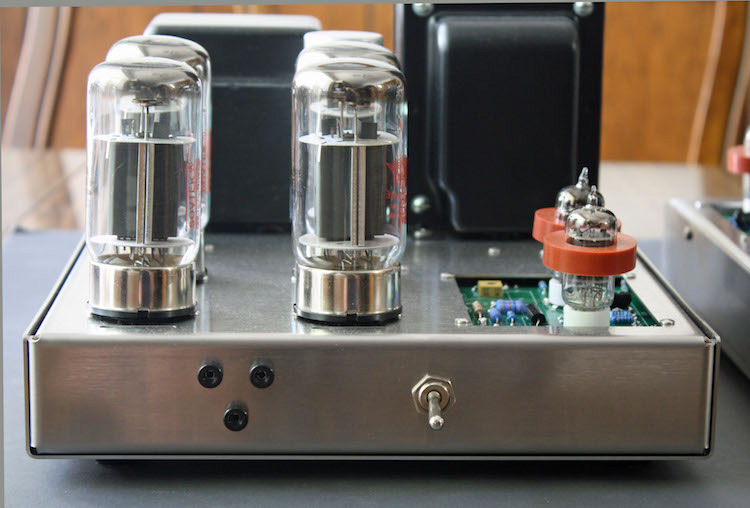
I’d also like to mention the rectifier options. When alternating current (AC – supplied by your wall socket) is to be used for audio amplification, it must normally be converted to low-ripple direct current (DC).
The VTA M-125 offers two options for this conversion. One is a classic “rectifier tube” that rectifies the AC to DC. Some audiophiles love the sound of tube rectifiers and claim that only tube rectification provides the sound that they seek (think of this as a BBQ chef preferring charcoal to propane for their cooking).
But for higher power output, the solid-state rectifier option is preferred. The solid-state rectifier for the M-125 is the Weber WZ68 (no relation to the BBQ-grill company). This rectifier not only uses the same socket as the rectifier tube, but also slightly delays the application of high voltage to the tubes until their heaters have had time to function. This preserves tube life. The more power you want from the M-125, the more highly the solid-state rectifier is recommended.
It is also fair to mention the parts quality of the VTA-M125, which is unusual (and likely unique) at this price point. The amp sports:
- High-wattage, close-tolerance resistors. This ensures side-to-side consistency for the mono block pair.
- High-quality, low-electrostatic-resistance, Japanese-made Nichicon power caps.
- Nichicon capacitors in the bias system.
- High-quality bias pots made by Spectrol of England.
- Jantzen Audio MKP film capacitors made in Denmark on the driver boards.
- Ceramic driver-tube sockets that use two "clam-shell" holders for each tube pin. These can be individually re-tensioned, if needed, with a small jeweler’s screwdriver.
- High-quality Cornell Dubilier silver mica capacitors for negative feedback.
- All capacitors in the M-125 are much better quality than the far more common and much cheaper ceramic caps. Consequentially, their capacitance values are much less likely to drift with age.
Describing the sound of the VTA M-125 mono-tube power amps is seriously difficult. Why? Because there are so many possible variations. The amplifiers can be run:
- With two or four output tubes
- In pentode or triode modes
- With at least five different types of output tubes
- With different driver tubes
- Using either the four or eight-ohm speaker-output taps
This provides for a LOT of possible configurations! And they can all sound different.
So, for the review configuration – I got a pre-wired amplifier with 5963 driver tubes and four 6550 Sovtek output tubes. I’m mostly running in pentode mode, using the 8-ohm taps for my 8-ohm Tekton Pendragon speakers or the 4-ohm taps for my 4-ohm Thiel 1.6 speakers.
Associated Equipment used:
- Audirvana 3 Plus software (for MQA sources)
- jRiver Media Center 22 for Mac (for non-MQA sources)
- jRemote on iPad (as controller for jRiver)
- AudioQuest Dragonfly Red USB DAC with MQA upgrade
- OPPO UDP-205 disc player with latest Sabre DACs
- Emotiva XDA-1 DAC
- Meridian Explorer2 DAC with full MQA decoding and rendering
- Rega DAC
- Emotiva Stealth DC-1 DAC (used as preamp and DAC)
- Emotiva USP-1 preamplifier
- Crown VFX2A crossover
- Emotiva UPA-1 mono solid-state amplifiers (for comparison)
- Tekton Pendragon ported speakers (run full-range)
- Thiel 1.6 ported speakers (run both full-range and with subwoofer)
- PowerSound Audio S3601 subwoofer
And how does this actually sound?

The VTA M-125s seemed to do a much better job of controlling the Thiel’s 6.5-inch ported woofers than they did with the Tekton Pendragon’s dual 10-inch woofers. The Tektons tended to sound slightly “tubby.” A good example would be Jennifer Warnes’ “Way Way Down Deep” from her “The Hunter” disc.
There is both a kick drum and a bass guitar, and the M-125s had difficulty clearly defining the differences between the two with the Pendragon speakers. But the same song on the Thiel speakers (without subwoofer) was as clear as could be. Therefore, I’d conclude that the Thiels are a much better match for the VTA M-125 amplifiers than are the Tektons.
That said, I’ve heard a friend’s VTA ST-120 amplifier running KT-120 tubes. The bass was not only more authoritative, but also far cleaner and crisper. Would the review M-125 amplifiers have more controlled bass with the KT-120 tubes? Possibly, but I didn’t buy any to find out.
Secrets Sponsor
It also bears stating that with both the speaker pairs I tried, the triode mode of the amps exacerbated the bass control problem. If you like a traditional tube sound, then triode mode is the way to go. I enjoyed the triode sound when using a subwoofer below 100Hz, but when running the speakers full-range, I consistently preferred the better bass control of pentode mode.
Now don’t think that the M-125’s bass is bad in any way – the Thiel speakers spoke cleanly and authoritatively with the M-125s driving them. I do think, however, that speaker matching will be more critical with this amplifier than it might be with a solid-state amplifier, but this seems to be true of ALL transformer-coupled amps. I wish I had my old Klipsch LaScalas back to play with – I bet the M-125s would LOVE them!
And it also bears saying that the M-125s would be the ideal amplifier to drive extremely low-impedance speakers. Since the output tubes see the impedance of the output transformer essentially as being in series with the impedance of the speakers, the M-125s can happily drive odd loads (full-range electrostatic or Apogee ribbon speakers, for example) that can stress or destroy solid-state amps.
As with almost all vacuum tube amplifiers, there is a slight bit of warmth or “tube bloom” in the midrange, but this isn’t at all overdone. Compared to a Heathkit or Dynaco from the 1960s, the VTA M-125 sounds relatively neutral and almost solid-state (at least in pentode mode). If you want the classic tube sound, then a simple flip of the mode switch into triode mode gives you a more generous dose of tube goodness.
Secrets Sponsor

Using the 2L recordings (free at www.2l.no/hires/), Mozart’s Violin concerto in D Major – Allegro by Marianne Thorsen & TrondheimSolistene was as clear as I’ve ever heard it through the VTA M-125 mono-tube power amplifiers.
Some have argued that stereo amplifier separation is “good enough,” and that the differences between a stereo amp and mono amplifiers are inaudible. I’d slightly disagree. Could I pick out the differences in a double-blind test? Probably not – they are small. However, in long-term listening the mono amplifiers seem better at preserving out-of-phase information.

For example, “Soy Yo” by Bomba Estéreo has out-of-phase, flanged drumming that appears to come from your sides with a stereo amplifier. But those drums seem to wrap all the way around behind you using mono amplifiers. The VTA M-125s delivered the surround effect definitively, despite using but two loudspeakers.

Another 2L recording with lots of midrange detail is Joseph Haydn’s String Quartet In D, Op. 76, No. 5 – Finale – Presto by the Engegård Quartet. This is one of the “show-off” tracks I like to play for visitors to my listening room – Wonderful through the M-125s! You can hear the acoustics of the original recording venue.
The treble, like the bass, is somewhat output-tube-dependent with the VTA M-125 mono-tube power amplifiers. The 6550 tubes that I have in my pair of amps provide (in my opinion) the best-sounding treble that I’ve heard with VTA products. My friend’s amp with the KT-120s does have “better bass,” but I still prefer the sound of the 6550 tubes in the treble range.
The “Lights of Louisianne” track (again, from Jennifer Warnes’ “The Hunter” disc) has a plethora of birds, bugs, and delicate treble percussion instruments in the mix. If your amplifier(s) can’t naturally produce treble, these either disappear or become artificial sounding. The M-125 amplifiers (with 6550 tubes) present the sounds so cleanly and naturally that you feel that you’re outdoors!

The percussive instruments in “The Piano Guys” cuts “Code Name Vivaldi” and “Celloopa” are also excellent examples of how naturally the VTA M-125 amplifiers handle the leading edges of treble sounds.

Some amplifiers overshoot the leading edges, causing a bright or “etched” sound, while others miss the leading edges completely, robbing the music of its “live sound.” The M-125s get the treble right, with no excessive brightness or softness.
I consider the treble of the VTA M-125 mono-tube power amplifiers to be one of their greatest strengths. With both my Tekton Pendragon speakers and my Thiel 1.6s, the treble separation, imaging, and above all, naturalness is unrivaled by any other amplifier I’ve yet heard.
Like all tube power amplifiers, the M-125 needs to have its output tube bias set initially, and again at least semi-annually. I checked the bias repeatedly throughout the review period; it needed a slight touch-up on the adjustment pot just once. The tube pairs all maintained their 1-volt bias with very little drift.
The bias must be set with the mode switch set to “pentode” mode (switch closest to the transformer behind it). The bias must also be set with a speaker load connected to the output terminals, but with the input jack (ideally) shorted. I bought an inexpensive shorting plug to do my bias setting, but in my opinion, the 50-cent shorting-plug should have been included with the amplifier.
The amplifiers can be run with 8-ohm speakers connected to the 4-ohm output taps or with 4-ohm speakers connected to the 8-ohm taps. But I found that I got the best sound by using the correct tap for each speaker’s impedance. Your mileage may vary…
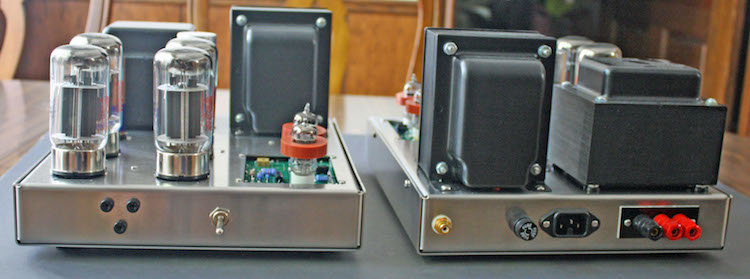
THE VACUUM TUBE AUDIO M-125 MONO-TUBE POWER AMPLIFIERS provide sound rivalling the most expensive amplifiers I’ve heard, at a far lower price. Highly Recommended!
- Versatile design allows for various tube options
- Non-magnetic and rust-proof stainless-steel chassis
- Triode or Pentode modes provide more or less “tube sound,” respectively
- Solid-state rectifier option provides higher power output
- Very inexpensive for the performance and power provided
- Exceptionally high-quality parts are used
- Made in the USA
- Clear labeling of amplifier switches and sockets
- Manual with a “quick-start-guide” in layman’s terms
- Better manual organization
Despite its minimal hand-holding for the user, the VTA M-125 Mono-Tube Power Amplifier delivers superb sound and does so for a fraction of what competitively-sounding amplifiers would cost. I consider the amps a bargain, and if you’re technically astute, you can buy these as kits and save even more money. Construction looks straightforward, and the step-by-step assembly manual is clear and concise.
Speaker selection is likely to be more critical for bass optimization, but this is true of any transformer-coupled audio amplifier. Don’t consider this a strike against the VTA M-125, but rather a fact of life that must be accepted and dealt with.


